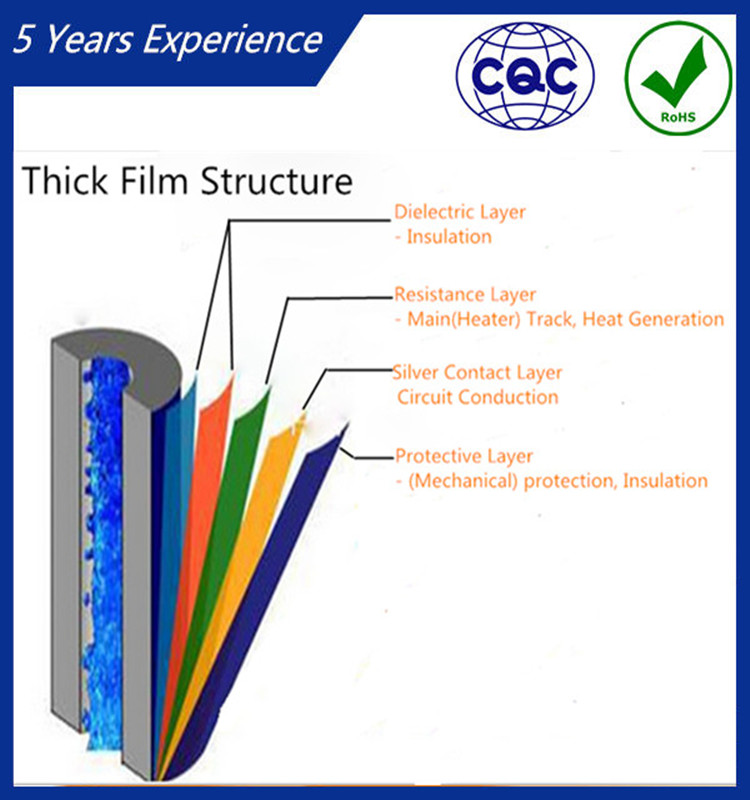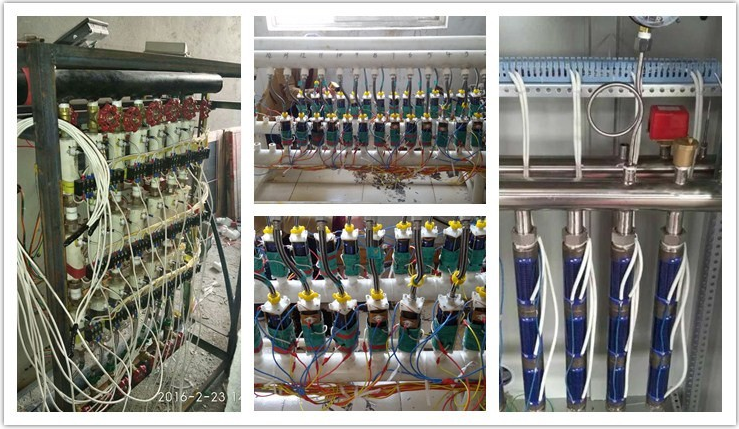Development of Industrial X-ray Detector
In industrial inspections, X-ray generation uses high-speed electrons in an X-ray tube to hit an anode target. Electron motion is suddenly stopped by the anode target, and most of its kinetic energy is converted into heat energy, and a small part becomes X-ray energy. X-ray tubes are vacuum diodes used to generate X-rays. Its cathode (filament) is used to generate hot electrons. A high voltage is applied between the anode and the cathode, and the electrons are attracted by the high potential of the anode, that is, they collide with the anode target at a high speed to generate X-rays. The high-speed movement of electrons in an X-ray tube is formed using a high voltage between the anode and the cathode. The two-stage high voltage of the X-ray tube is supplied by a high voltage generator (mainly composed of a high voltage transformer, etc.). High voltage generators are generally immersed in insulating oil. The largest X-ray machine currently used in industry is 420 kV. Accelerators can be used to obtain high-energy X-rays, and more and more linear accelerators are used in flaw detection.
Trend Analysis of Accelerators in Industrial X-Ray DetectorOver the past decade or so, the development of ray detection accelerators in the world has been rapid. On the one hand, the number of testing accelerators owned by industrialized countries is rapidly increasing, and the other is the performance of flaw detector accelerators, especially in terms of miniaturization and reliability. Significant progress has also been made. From several tons of weight in the past to hundreds of kilograms, or even only a few tens of kilograms, some small VSWR linear electron accelerators can work reliably for more than a decade. General inspection accelerators include four types of high-pressure accelerators (resonant transformers and electrostatic accelerators), electronic induction accelerators, electron linear accelerators, and electronic twist accelerators. At present, it has been replaced by an electron linear accelerator. At present, the world's major accelerators for testing have been serialized and commercialized, especially for electron linear accelerators. In the energy range of high-energy ray detection electrons, strong X-rays can be output, which can meet the needs of general inspection. Therefore, they have basically been determined. The development trend of flaw detection accelerators (represented by standing wave electron linear accelerators) is mainly to improve and improve practical capabilities and performance, and strive to combine high sensitivity, high productivity, economy, and versatility organically, that is, toward miniaturization and high Reliability, production life, low cost.
miniaturizationIn the past more than a decade, miniaturization has achieved significant development. Due to the use of edge-coupled standing-wave electron linear accelerators, the volume of the original electron beam accelerator and the heavy-duty power supply are all reduced by more than 50%. In addition, the use of 5cm or 3cm microwave power with wavelength instead of the original The 10cm wave source, its accelerator structure size becomes smaller, the volume weight is also reduced.
High reliability and long lifeThe main factors influencing the service life are the vacuum inside the tube, the cathode and its thermal electrons; the main factors affecting the reliability are the fluctuation of the tube vacuum, the working state of the circuit, the electron energy and the output X-ray intensity. Therefore, an all-metal-ceramic full-sealing accelerating tube structure is adopted, and it is connected to a non-removable, air-tight whole by an electric vacuum process such as high-temperature brazing or argon arc welding, and uses an oil-free ultra-high vacuum exhaust technology and long The time high-temperature baking process is completely degassed and uses solid circuit or integrated circuit standard plug-in boards. In addition, the phase-locked automatic frequency control system can be used to test that the working frequency of the magnetron is always equal to (automatic tracking) the resonant frequency of the accelerating tube, so that the machine is in the best working condition, greatly reducing the fluctuation of the relevant performance, and improving the reliability. .
Simplify the structure and reduce costsAlthough the edge-coupled standing wave acceleration structure performs well, the structure is complicated. At present, all countries in the world are trying to adopt various schemes to simplify the structure and reduce costs. Mitsubishi Japan studied the single-cycle π-mode standing wave acceleration structure, but the work is not yet stable.
The development trend of X-ray flaw detectors for the sake of portability requires the development of such flaw detectors in light weight, small size, and reliable use. At present, the following measures are mainly used to reduce the weight. Reducing the X-ray tube size, such as using a cermet X-ray tube; locally lining the lead only near the radiation window of the X-ray generator; packaging special crepe paper on the glass X-ray tube housing can improve reliability, but has the disadvantage of affecting heat dissipation. X-ray generator is filled with sulfur hexafluoride and other gases instead of transformer oil. Increase the operating frequency of the high voltage transformer to increase the operating frequency of the X-ray tube and reduce the weight of the high voltage transformer. At present, the working frequency is generally increased from 50-60Hz to 400-800Hz. There are also general power frequency power supplies that are converted into rectangular pulse waves after being converted into high-voltage transformers through the control console. The multiple resonances of pulse waves can be used to increase the frequency and reduce the frequency. The size of the winding of the high voltage transformer is greatly reduced, and the number of pressing pieces is selected according to requirements, so that the weight and volume of the X-ray generator are greatly reduced and reduced. The X-ray generator improved with the above measures has a significantly reduced weight. For this type of X-ray inspection machine, the console generally has semi-automatic exposure parameter pre-selection devices, and some waveform conversion devices, the circuit is more complex. At present, integrated components have been used to replace their complicated circuits and large components. The weight and volume of the console have been greatly reduced, typically 10 kg. In order to improve the reliability of its control console, the control console is currently optimized to use the computer system for control and metering, which greatly increases the reliability and accuracy. Mobile X-ray inspection machineThe mobile X-ray flaw detector mainly develops in the direction of automation and high reliability. At present, China has 50-40kV oriented and circumferential irradiation series of products. In order to achieve automation and high reliability, constant pressure, steady flow and perfect protection devices are generally used. The use of plug-in control, the plug-in provides a variety of required exposure parameters, plug-ins are inserted into the dedicated console console, and with the robot and conveyor belts, can achieve automatic control, automatic inspection and sorting. The company also has robots and marking mechanisms that automatically pick and place films, and has created a 500 mm x 120 mm x 8 mm cushioned ionization chamber for automatic exposure, with a lead thickness of 1 mm on the back. In order to prevent foreign rays. When used, it is placed on the outside of the back film that is transilluminated. The dose of X-rays transmitted through the film during transillumination is measured. After reaching a certain value, the X-ray tube voltage can be automatically cut off. This can effectively control the exposure time and ensure that the film black uniformity. The tube voltage can also be automatically adjusted based on the type and thickness of the material being transmitted.
The rare-earth metal thick film heating technology is one of today's most innovation and forward-looking solution for electric heating field.The thick film heating tubes/elements are produced by screen-printing dielectrics (5 layers), resistance (palladium-silver), conductor (silver) and isolation glazes on the substrate and sintered 7-9 times at temperature over 900℃.

da has more than 6 years of production experience in thick film stainless steel Heating Tube; more than a million products have been tested in market practice; and the unanimous recognition of the top manufacturers both in domestic and abroad (Midea, Kohler, Haier, Lexy, etc.) is the witness of Jieda's leading level in the industry of thick film heating tubes, and is also Jieda's motivation for endless excellence. No best, only better. Jieda will work hard all the time.
With large power Thick Film Heating Tube simple tubular structure, it can heat water flow inside the tube. Electric Circuit printed on tube surface, to heat the water flow inside.For applications where space is limited, this simple profile heater offers high thermal power density and fast response times to heat up or cool down (due to low thermal mass)

Temperature Controlled Electric Heater,Space Heater,Ceramic Heater,Room Heater
XINXIANG JIEDA PRECISION ELECTRONICS CO.,LTD , https://www.gidaheater.com
